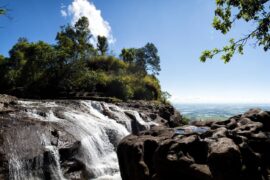Discover Mount Kailash Secrets: 8 mysteries facts you didn’t know
Mount Kailash lies in the remote reaches of the Himalayas. it is more than just a majestic peak — it’s a place steeped in mystique, spirituality, and enigma. Here are the Mount Kailash Secrets, amidst the rugged beauty of the Tibetan Plateau, lies a mountain revered by millions and shrouded in fascinating secrets.
Mount Kailash remains an enigmatic landmark, beckoning pilgrims, adventurers, and seekers of truth. Its towering presence, coupled with its rich legends and mysteries, continues to captivate the human imagination.
Here are some of the most intriguing Mount Kailash Secrets & facts about Mount Kailash:
The sacred mountain:
Mount Kailash is the earthly abode of the Hindu deity Shiva, the supreme god of destruction and regeneration. For Buddhists, it is the dwelling place of Demchog, representing supreme bliss. This sacred mountain is also venerated by followers of Jainism, Bon, and Tibetan traditions, making it a pilgrimage site of unparalleled significance.
Unconquered summit:
Despite numerous attempts, Mount Kailash’s summit has never been conquered. It’s not due to its technical difficulty but rather out of respect for its sacredness. Climbing Mount Kailash is forbidden in deference to its religious sanctity, a testament to the reverence it commands.

Anti-clockwise circumambulation:
One of the most distinctive rituals performed by the followers of Bon religion is the anti-clockwise circumambulation is the Mount Kailash Secrets. The Hindus, Buddhists, and Jains, however, follow the clockwise circumambulation.
Source of four major rivers:
Mount Kailash is the origin point of four major rivers: the Indus, the Brahmaputra, the Sutlej, and the Karnali. These rivers, considered lifelines of Asia, spring forth from the glacier-capped slopes of the mountain, adding to its significance in the region’s ecological and hydrological balance.
UNESCO Tangible List:
Recognizing its cultural, religious, and environmental significance. The Indian segment of Kailash Mansarovar has been placed on UNESCO’s tentative list of potential world heritage sites. This status ensures the preservation of its natural beauty and cultural heritage for generations to come.
Geological anomalies:
The geological formation of Mount Kailash is puzzling. While surrounding peaks are composed of sedimentary rock, Kailash constitutes black rock, a rare occurrence in the region. Its symmetrical pyramidal shape and distinct features have puzzled geologists for decades, prompting theories of its unique formation.
Magnetic anomalies:
Mount Kailash is famous for its magnetic anomalies, with compass needles failing to point towards the North. This phenomenon adds another layer of mystique to the already enigmatic mountain, intriguing scientists and spiritual seekers alike.
Mountain of cultural importance:
Mount Kailash secret is not just a geological marvel; it’s also a melting pot of cultures, drawing pilgrims and travelers from diverse backgrounds. Tibetan prayer flags flutter in the wind alongside colorful prayer wheels, while the air resonates with chants and mantras from different faiths—a testament to the mountain’s role as a unifying force in the spiritual landscape.




Comments are closed.